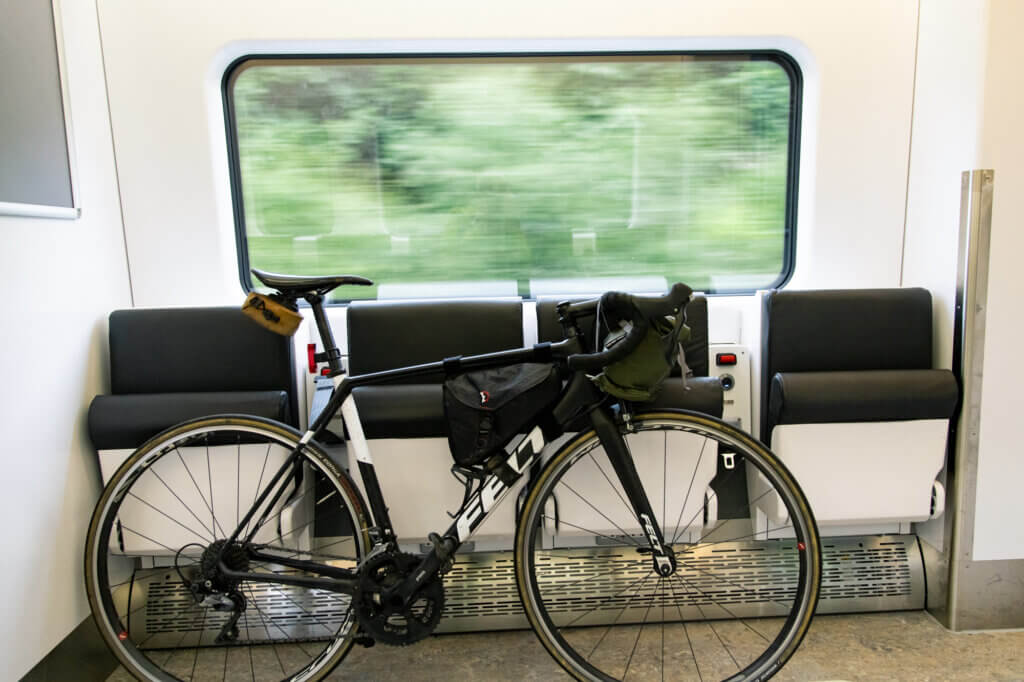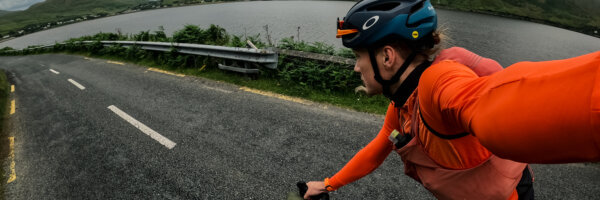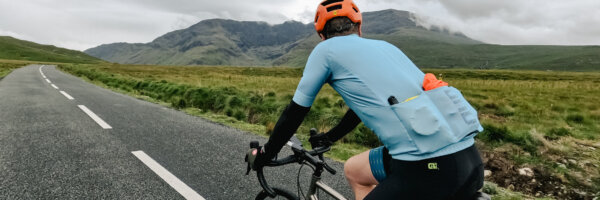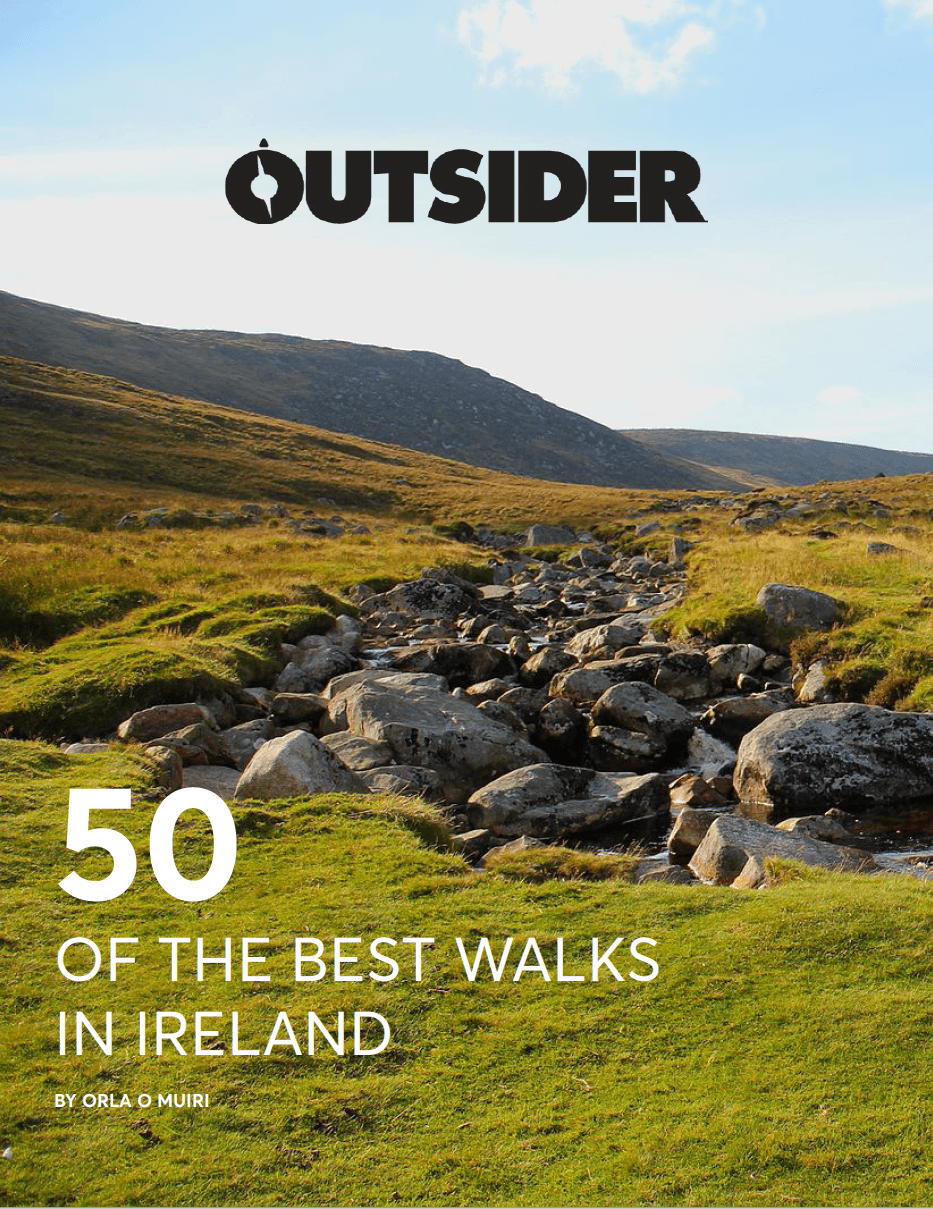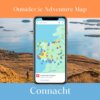Brought to you by:

Bike packing is an excellent way of exploring Ireland. All you need is a bike, some essential bits of kit and an appetite to get out there and explore this summer. To give you a steer in the right direction, we have popped together a list of bike packing kits that you need, saving you from buying items that you will never end up using. Everything on the list below has been tried and tested by our team. Great Outdoors is a great place to shop for these items and their team of expert staff will always make sure you leave with exactly what you need to make the most out of your next adventure, big or small.
Bike Packing: The Bike

7 Things You Should Consider When Buying Your Next Bike Saddle
Bike Packing Camping Gear
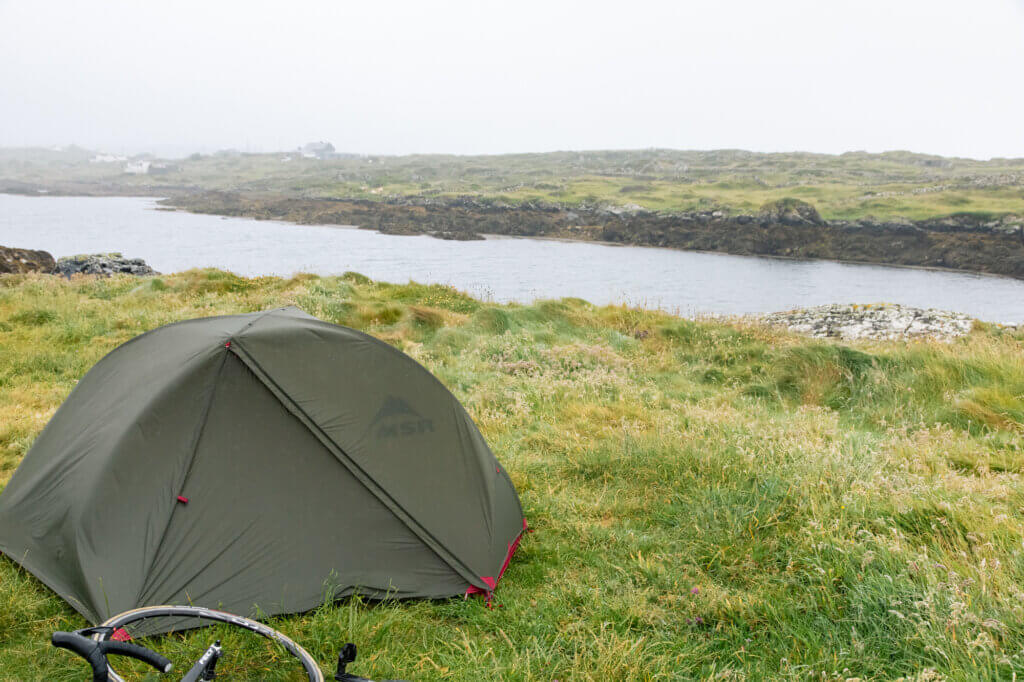
1. A shelter solution.
The MSR Hubba Bikepack is a new tent that is designed specifically for bike packing. The Hubba and Hubba Hubba are well-known backpacking tents and are broadly considered to be the best all-around backpacking tents on the market. The bikepacking version of these tents keeps all the amazing features that we have learned to love with the original Hubba line but adds a redesigned super functional, handlebar-mounted stuff sack.
2. A sleeping bag
We would recommend a lightweight down sleeping bag to reduce pack size. The Vango Cobra 200 is an excellent lightweight option. The Cobra 200 is designed to comfortably fit individuals up to 190 cm tall, with a mummy shape that tapers from a generous shoulder width to an ergonomic foot area for optimal thermal efficiency. In warmer weather, we have even managed with a Thermolite sleeping bag liner.
3. A sleeping pad
These are essential for longer trips. We have only once gone bike packing without a sleeping mat and it has resulted in very poor sleep! Nowadays they are so exceptionally lightweight that it is wise to bring them. We have used Therm-A-Rest and Sea to Summit mats, both of which provided a great night’s sleep.
4. Food & Cooking
A compact camping stove and lightweight cookware are worth bringing as it’ll mean you aren’t relying on shops or restaurants when you want to refuel. The MSR Pocket Rocket II is a durable and reliable stove option and the MSR Titanium cookware range provides the perfect lightweight option. Sea to Summit also makes some collapsable cookware which are excellent for saving space.
Therm-A-Rest Sleep System Review
Bike Packing: Clothing
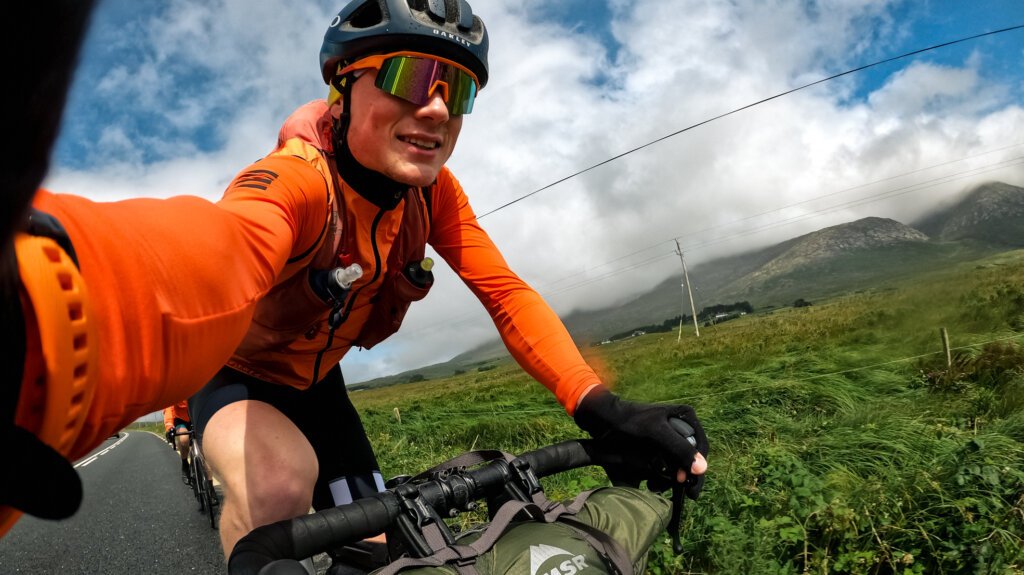
1. A comfortable helmet.
This one needs no explanation. This is the most important piece of kit and is well worth properly investing in. We recommend going to our local bike shop and talking to one of the experts.
2. Moisture-wicking baselayer.
Depending on the length of your trip and your access to washing facilities you may need different clothing. We highly recommend investing in at least one set of good-quality baselayers. Baselayers are wicking layers that sit directly against your skin and help you to regulate your temperature. Icebreaker Merino baselayers are the best in class and worth investing in.
3. Bib Shorts
We would advise bringing a minimum of two pairs of bib shorts for any trip over two days in length. This is necessary from a hygiene point of view. If you wish you can get away with one jersey but you’ll get very smelly! We recommend checking out Altura.
4. Comfortable socks
Great socks are very important for all outdoor activities. As with bib shorts, we would advise wearing a pair and washing a pair. The weight you save by only having one pair of socks is not worth any potential issues with infections. We have been using Darn Tough socks recently for everything from hikes to cycles. We love them.
5. Jacket
A lightweight windproof, waterproof, and well-fitting jacket will provide you with protection from the conditions and also keep you warm in the evenings when you stop riding. The Rab Downpour Plus 2.0 is a brilliant lightweight option that won’t break the bank. We advise visiting Great Outdoors in Dublin to try on a few different jackets before buying!
6. Arm and leg warmers
These are great ways of adding extra insulation without needing a whole new set of clothes.
7. Cycling shoes
These are worthwhile. If you are embarking on a long bikepacking trip perhaps consider a mountain biking shoe as these are easier to walk around in than traditional road cycling shoes.
8. A Buff
Multi-purpose headwear provides you with protection from various weather conditions.
9. Sandals
A lightweight footwear option is exceptionally useful for walking around after a day of cycling. They allow your feet to breathe, weigh very little and can be very comfortable.
10. Overshoes
If you are expecting rain or cold temperatures, overshoes are a must. They keep your feet warm and dry. The Sealskinz Caston All Weather Overshoe is the quintessential choice for cyclists seeking reliable performance and all-weather resilience. Designed to work seamlessly with cycling shoes or trainers, this overshoe extends 7cm higher than traditional counterparts to deliver enhanced warmth and protection.
11. Glasses
A good pair of sunnies will not only keep the sun out of your eyes, it will also protect them against bugs and debris. Having a pair that fits your face is vital. We advise visiting Great Outdoors in Dublin and trying on a few pairs. They might look a bit “out there” for some people but we love the look of the new Oakley Corridor glasses that Great Outdoors have in stock at the moment.
12. Gloves
Even in summer, having a good pair of gloves is essential for Ireland. When it comes to cycling, it is important to have a pair of gloves that protect your hands from the wind, rain and cold while not impeding the use of the breaks and gears. For summer adventures we recommend the Icebreaker Merino Quantum Gloves and for winter we recommend the Sealskinz Kelling Waterproof All Weather Insulated Glove.
Bike Packing Bags
Having enough storage for all of your essential bits of kit is super important when bike packing. The gear you need to bring will vary depending on your itinerary and the distance of your trip. But you do have to make sure that the weight is well distributed across your body and your bike so the comfort and handling of your bike is not compromised. For a very short trip you can get away with just a backpack but as you start to push the duration of your cycles out you will find that many people use on-bike storage. This storage often comes as frame bags handlebar bags saddlebags.
1. A frame bag
A frame bag provides storage space within the bike’s frame triangle. They are an excellent way of getting storage on your bike that does not impede on the pedalling or handling of the bike. While they work especially well on road bikes, mountain bikes may not fit a frame bag due to their geometry. It is worth noting that in high winds the frame bag will catch the wind and may make the bike more difficult to control.
2. Handlebar bags
These offer accessible storage for everyday items that you may want easy access to. Items like snacks, a camera, or a small first-aid kit are worth keeping in a handlebar bag. That being said, the new MSR Hubba Bikepack comes with a handlebar bag that has additional space for storing other sleeping items. On a recent trip we fit; the tent, our sleeping bag and our sleeping mat in or on the Hubba Bikepack’s stuff sack.
3. A larger saddlebag.
While small saddlebags (<1 Litre capacity) are excellent for storing spares on your bike, you should consider a larger saddlebag for additional storage. Items such as clothing and bedding are worth storing in your saddle bag. We have used Ortlieb packs in the past and they have been great.
4. A hydration vest.
We have used a myriad of different “on-person” storage solutions for bike packing including hip belts and backpacks but our favourite is our hydration pack. This gives exceptionally easy access to food and drink and other gear you want easy access to. Vests fit snugly and don’t impede movement at all. Great Outdoors stock the Ultimate Performance Fleet 6 Race packs which will work well.
Bike Packing: Repair and Tools
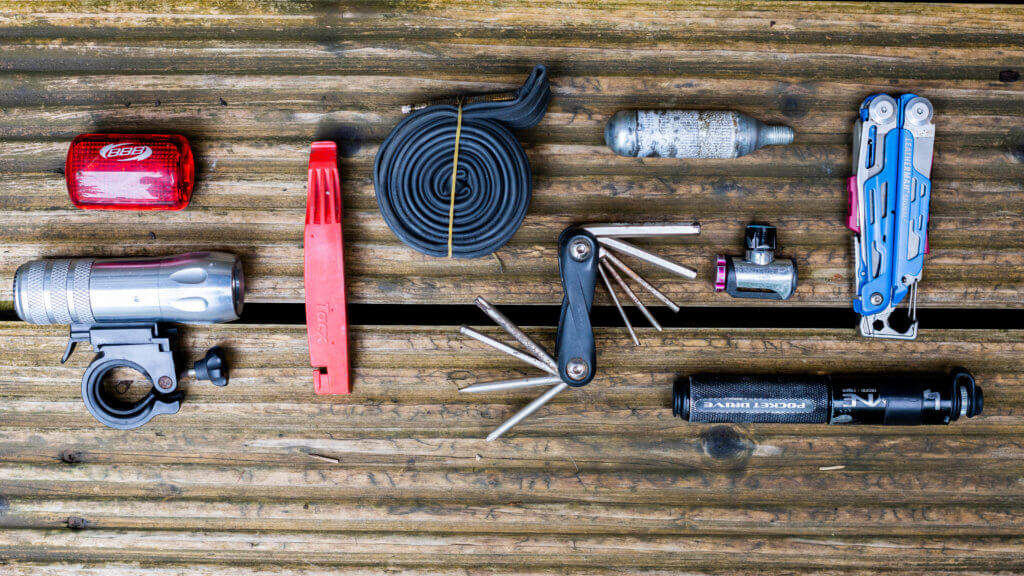
1. A bike-specific multi-tool.
These are worth their weight in gold if you find yourself in a sticky situation on a bike. Choose a compact tool with essential functions like Allen keys, screwdrivers, and a chain tool.
2. Spare inner tubes.
We would advise carrying at least one spare tube suitable for your tyre size.
3. A puncture repair kit
A small but worthwhile piece of kit that means you only need one spare tube. You can fix the punctured tyre when you are cooking dinner at camp.
4. Tyre levers
These are excellent when it comes to changing tubes on the go.
5. A mini pump or CO2 inflator or both.
Useful compact ways of inflating tyres. Many of the bike-friendly accommodations in Ireland, and even some cafés will have a traditional floor or track pump for you to use. We use and love the Lezyne Pocket Drive pump. It is exceptionally compact but still functional.
Bike Packing: Hydration and Nutrition
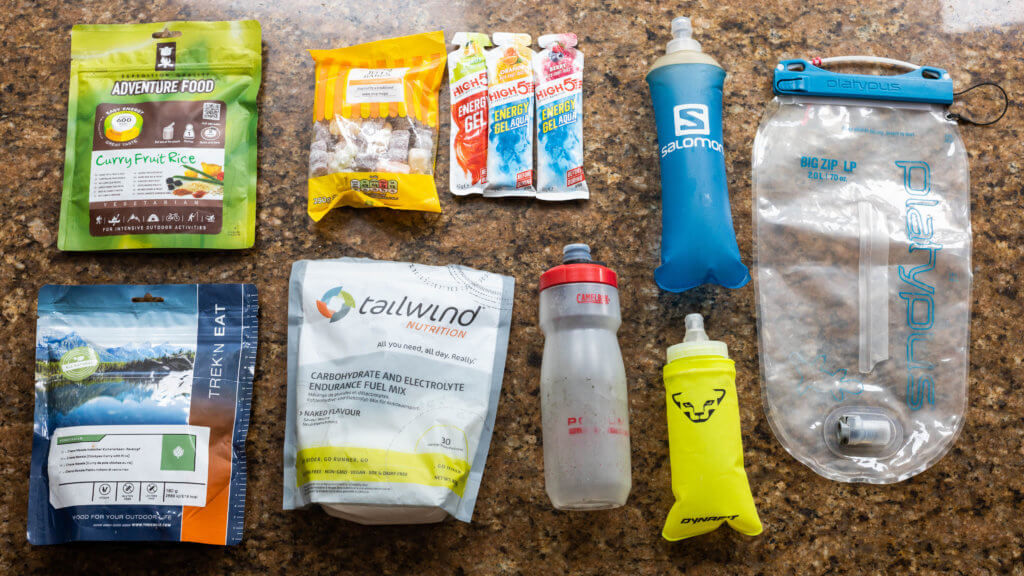
1. Water bottles or hydration pack
Some people prefer classic water bottles mounted to their bike’s frame for water, others prefer a hydration reservoir like the Platypus Big Zip. Whatever your preference, make sure you carry enough water for your rides, especially in remote areas. Note where you can refill en route to make sure you don’t have to over-pack water.
2. Snacks
Bring an appropriate collection of food and electrolytes that you know you can rely on mid-ride. Energy bars, gels, or snacks provide quick and convenient fuel during rides.
3. Lightweight cooking utensils
A compact camping stove and some lightweight cookware are worth bringing. The MSR Pocket Rocket II is a perfect stove option. We have been using the MSR Titanium cookware range recently too and have been loving how light and durable the pots are. The MSR Titan Kettle .95L is our go-to!
Bike Packing: Navigation and Safety
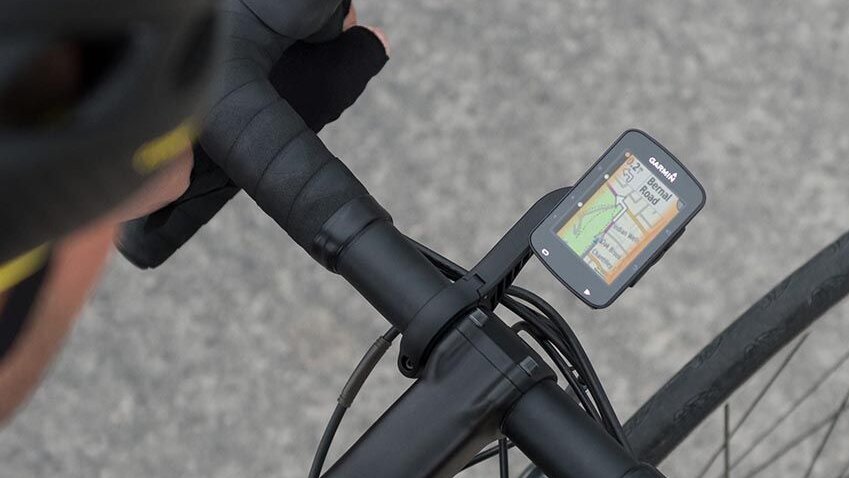
1. A GPS device
Preferably a GPS device with maps. This enables easy step-by-step mid-ride navigation. Some GPS units even have a built-in search feature for finding attractions, towns or shops. For our rides we have been using a Garmin Fenix, it works great and has excellent battery life!
2. Bike Lights
A set of good-quality bike lights is worth having year-round. Even if you do not intend on riding in the dark it is good to have them in case you are delayed en route and end up riding later than intended. If you want to invest in the best, consider the Garmin Varia front and rear lights. With more features than most bike computers, these lights are amazing bits of kit!
3. Small Lock
A compact bike lock is worthwhile, especially if you are bike-packing solo. You can get a light cable lock that will fit easily in your saddle bag. While these light locks may not be the most secure they are a good deterrent to potential thieves while you are in a supermarket for a few minutes.
Personal Items
1. A towel
Consider bringing a microfibre towel. You will be glad of it if you decide you want to go for a swim! The ultralight Sea To Summit Airlite Towels are incredibly light and worth having!
2. Toiletries
Some basic toiletries such as toothbrushes, body glide, toothpaste, and biodegradable soap.
3. Sunscreen and insect repellent.
The Lifesystems Sport suncream is sweat and waterproof. Incognito make a range of natural anti-mosquito products which will keep the pesky insects at bay.
4. Multitool.
Useful in a multitude of scenarios a multitool is a must!
Remember, this list should be adapted to your specific needs, the duration of your trip, and the expected weather conditions. Keep in mind the importance of lightweight and multifunctional gear to maximize efficiency and comfort during your bikepacking adventure in Ireland.



